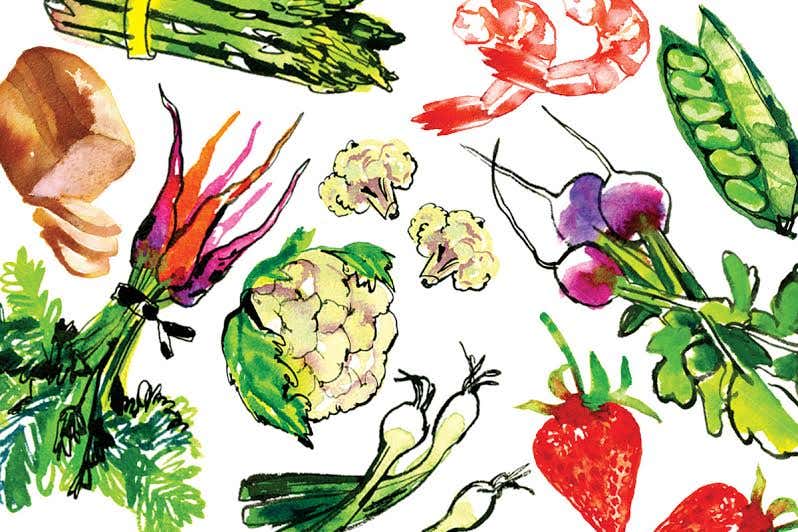
Tabbouleh is a Middle Eastern salad made of bulgur, which is hulled wheat that has been steamed, dried, and then cracked or ground, right? Right about the bulgur, not quite right about the tabbouleh.
"Let me put it to you this way," says SAVEUR consulting editor Paula Wolfert, a celebrated expert on the cuisines of the Mediterranean: "When you look at tabbouleh, it should be green." That means a heap of fresh parsley and plenty of mint, plus some bits of cucumber and scallion, a few pieces of tomato—and a decidedly small amount of fine-grain bulgur. "The bulgur is meant to keep the juices from falling to the bottom of the bowl," Wolfert explains. This is worth doing because those juices, in true tabbouleh anyway, are full of flavor. Or are supposed to be. Although most Americans are familiar with a lemony, olive oil-dressed tabbouleh, the very name of the dish is said to be derived from tabil, the Arabic word for spice. Classic recipes, therefore, often include cinnamon, allspice, nutmeg, and aleppo powder (a ground pepper made from a dried chile developed in Syria).
"The art is in the seasoning," says Wolfert, "but the secret is in the chopping." For the best tabbouleh, whether it is to be served for a light lunch, as the dish was originally conceived, or as part of a Middle Eastern-style mezze (selection of appetizers)—in which case it is traditionally scooped up with romaine lettuce or pita bread—don't bruise the herbs and don't pulverize the vegetables. So don't even think about using a food processor.
Keep Reading
Continue to Next Story










